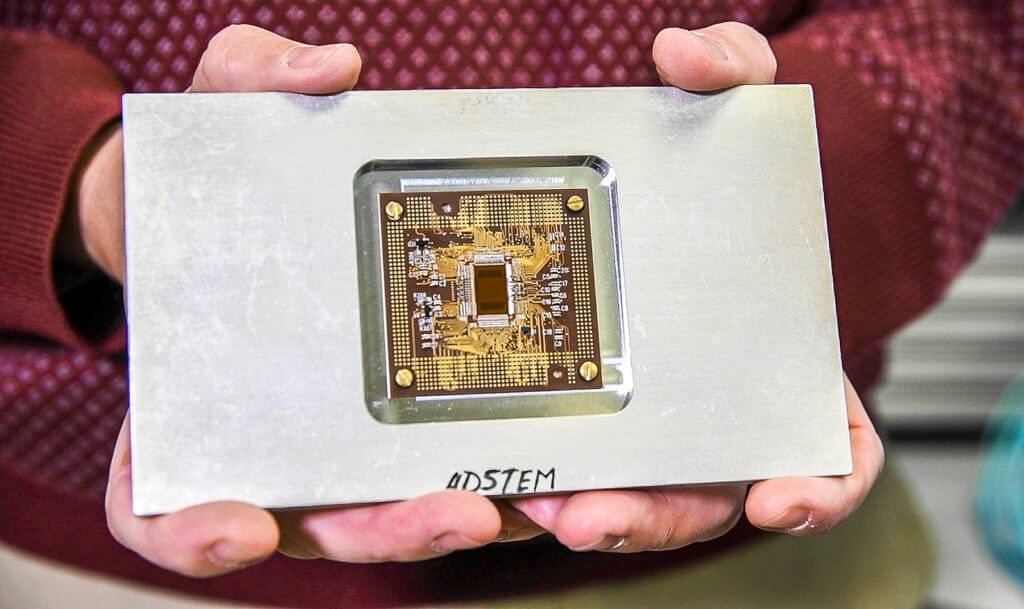
Advances in electron microscopy – using electrons as imaging tools to see things well beyond the reach of conventional microscopes that use light – have opened up a new window into the nanoscale world and brought a wide range of samples into focus as never before.
Electron microscopy experiments can only use a fraction of the possible information generated as the microscope’s electron beam interacts with samples. Now, a team at the Department of Energy’s Lawrence Berkeley National Laboratory (Berkeley Lab) has designed a new kind of electron detector that captures all of the information in these interactions.
This new tool, a superfast detector installed Feb. 12, captures more images at a faster rate, revealing atomic-scale details across much larger areas than was possible before. Faster imaging can also reveal important changes that samples are undergoing and provide movies vs. isolated snapshots. It could, for example, help scientists to better explore working battery and microchip components at the atomic scale before the onset of damage.
The detector, which has a special direct connection to the Corisupercomputer at the Lab’s National Energy Research Scientific Computing Center (NERSC), will enable scientists to record atomic-scale images with timing measured in microseconds, or millionths of a second – 100 times faster than possible with existing detectors.
The development of the new detector, known as the “4D Camera” (for Dynamic Diffraction Direct Detector), is the latest in a string of pioneering innovations in electron microscopy, atomic-scale imaging, and high-speed data transfer and computing at Berkeley Lab that span several decades.
Camera data is transferred over about 100 fiber-optic connections into a high-speed ethernet connection that is about 1,000 times faster than the average home network. The network connects the Foundry to the Cori supercomputer at NERSC.
Berkeley Lab’s Energy Sciences Network (ESnet), which connects research centers with high-speed data networks, participated in the effort.

